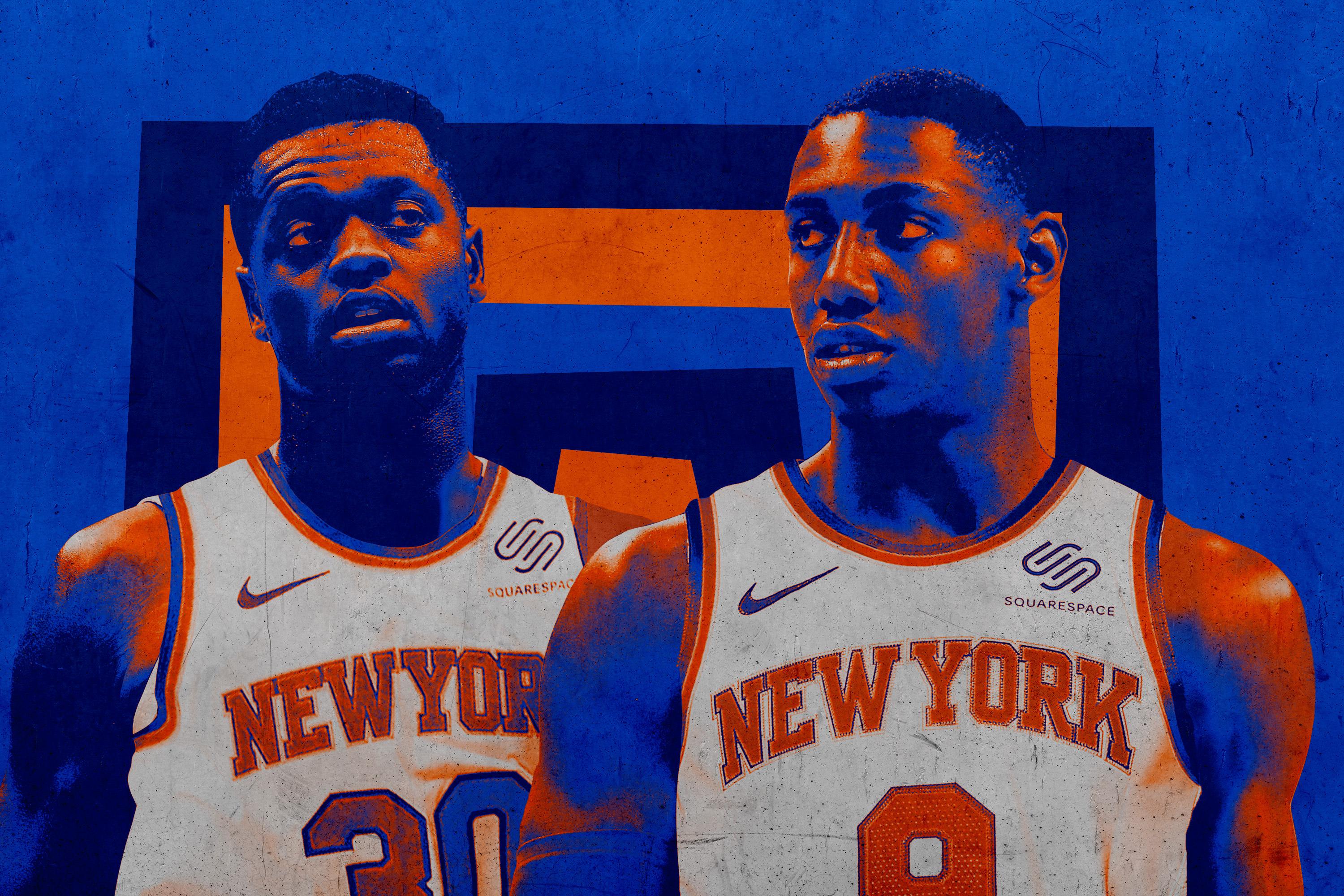
The NBA offseason established a bunch of new story lines that require closer inspection. Throughout the next month-plus, we’re giving second thoughts to the most intriguing ones.
Today’s question: Are we sure the Knicks are in dire straits?
After Kathleen Kelly breaks up with her boyfriend in the 1998 romantic comedy You’ve Got Mail, he asks the question many do: “Is there someone else?” Kelly, played by Meg Ryan, replies, “No, but there is the dream of someone else.”
For most of my life, I thought this was a quote about love. Don’t settle, Meg Ryan was telling us. Find your Tom Hanks. Then the 2019 NBA offseason came and went, and I realized it’s about the Knicks.
New York was dreaming of someone else when it traded Kristaps Porzingis to the Mavericks in late January. Porzingis asked for a trade, sure, but the front office decided it wanted cap space in return for its best player. The following summer, the Knicks failed to sign their two top targets, Kyrie Irving and Kevin Durant, in free agency, despite saving up all that room for them. That massive cap space was instead used on a small collection of midlevel players. This is cyclical for the Knicks. They find someone they like, who also happens to be someone everyone else likes (LeBron James in 2010, for example); decide they have a shot at signing him in free agency; and dump substantial contracts in anticipation. Then New York strikes out. The superstar signs somewhere else, and the Knicks begin, once again, to collect pieces and players in a hopeless attempt to fill the void.
The 2019 iteration of this cycle ended with New York signing multiple players to short-term deals. This gives the franchise freedom in the future, when it will inevitably lust after another top-tier free agent. Many of the players signed this offseason—including Marcus Morris, Bobby Portis, Elfrid Payton, Wayne Ellington, Reggie Bullock, Julius Randle, and Taj Gibson—won’t be part of the organization’s larger plan. They’re temporary. The Knicks are still dreaming of someone else.
Let’s recap what led New York here, to a roster of young maybes and 47 power forwards: All last season, rumors that Kyrie and KD were set to team up on the Knicks were fervent. After the Porzingis trade, in which New York received Dennis Smith Jr., two future first-round picks, and two throw-in players on expiring contracts, the team had more than $70 million in total cap space, enough to sign two maximum contracts. “From what I’ve heard,” Knicks owner James Dolan said on the radio in March, “we’re going to have a very successful offseason when it comes to free agents.”
The front office wasn’t subtle about its goal for the 2019 summer. In a letter to season-ticket holders, president Steve Mills and general manager Scott Perry wrote, “We have created a tremendous amount of financial flexibility, which has put us in a position to potentially sign up to two max free agents.”
Part two of the plan was the 2019 NBA draft. The Knicks finished 2018-19 with the worst record in the league, 17-65, giving them the best odds in the lottery. This wasn’t any lottery, either. The chance to draft Zion Williamson was at stake. Landing the most exciting player to enter the draft since LeBron James would’ve changed everything for a franchise with just three winning seasons in the past 18 years. But, like DSJ at the free throw line, ping-pong balls don’t care about your percentages—and even the best overall odds only amounted to a 14 percent chance of landing the top overall pick. New Orleans won the first pick, and the Knicks wound up with the third. In June, they selected forward RJ Barrett, Williamson’s teammate at Duke.
Barrett will join a number of second- and third-year players on the Knicks: Smith, Kevin Knox, Mitchell Robinson, Allonzo Trier, Frank Ntilikina, and Damyean Dotson. Like the rest of that crowd, there’s no consensus on Barrett’s projections. His flaws—a tendency to shoot games away, poor decision-making, forgetting he’s on a basketball court when he’s off the ball—were already evident at Duke. But there is legitimate potential for Barrett as an elite scorer, and New York has nothing but time.
Of New York’s seven free-agent signings, the player most likely to stick is Randle. The 24-year-old is coming off a career year with the Pelicans, when he averaged 21.4 points and shot 3s decently for the first time (34.4 percent on 2.7 attempts per game). Randle’s deal, a three-year, $62.1 million contract with a partially guaranteed third year, suggests the Knicks have confidence in him. Every other player the franchise signed this summer is either on a one-year deal or has a team option after this season.
There are many problems with this roster, as is clear by the presence of four power forwards. But the players they have are more than just temporary stand-ins. Gibson’s work ethic is a shining example for young frontcourt players. Ditto for Ellington and the backcourt, where his spacing will also make it easier for others to find their shot. Morris will be appealing to other teams during the season, which could allow the Knicks to pull in more assets via a trade. Most of the optimistic takeaways from this summer revolve around how the Knicks will fare in the long run. Fit doesn’t matter as much as the future. That, for those desperate to understand New York’s plan, is where the sun is. The Knicks are giving themselves the freedom to, one day, find someone else.